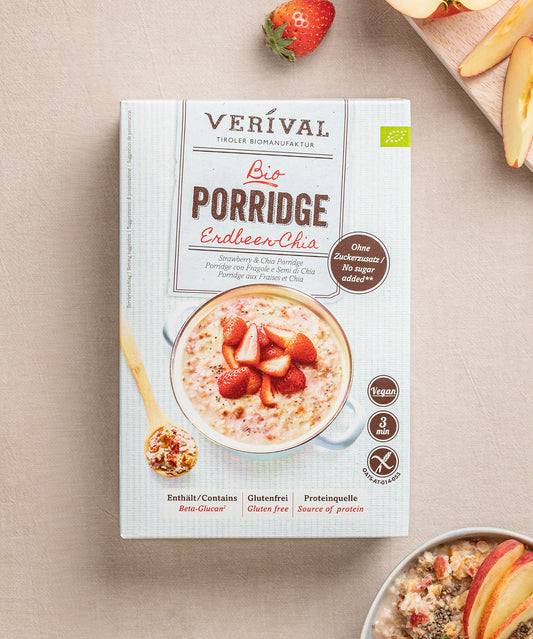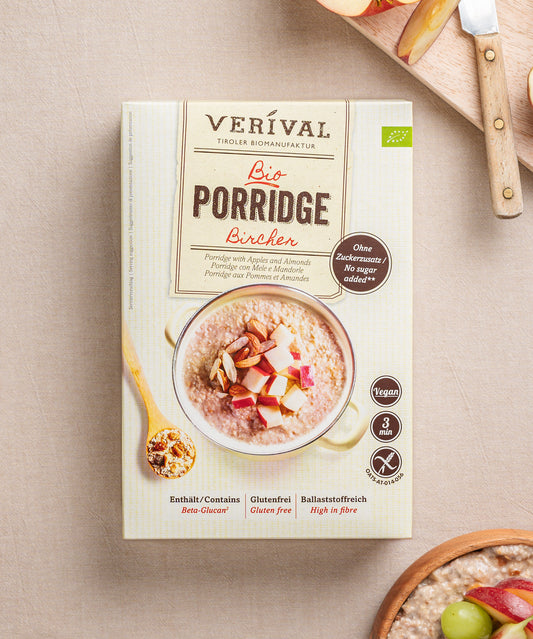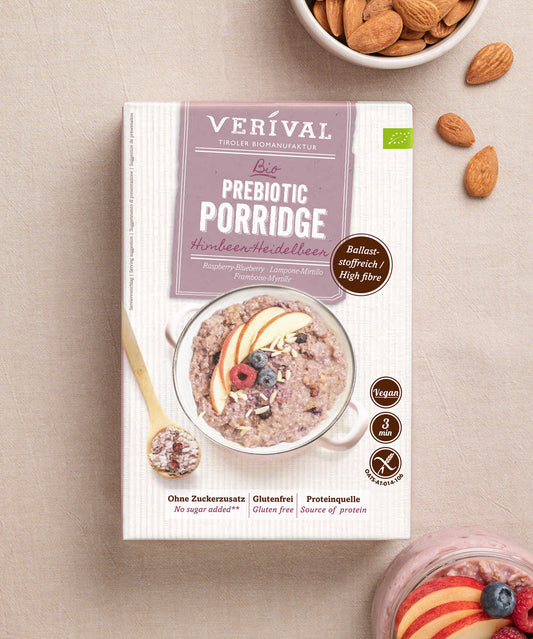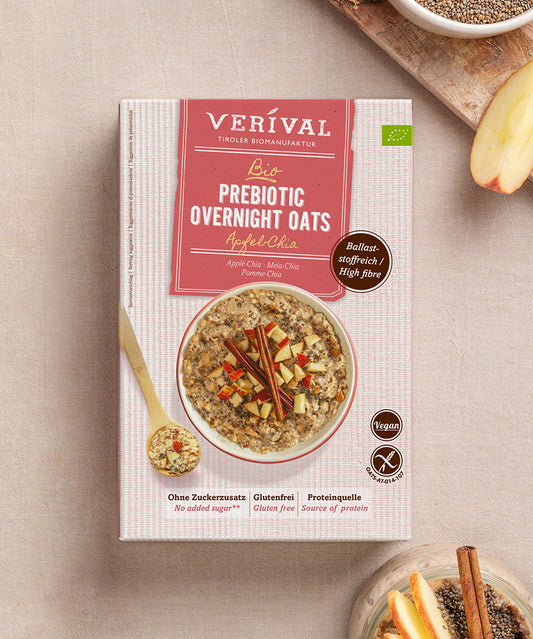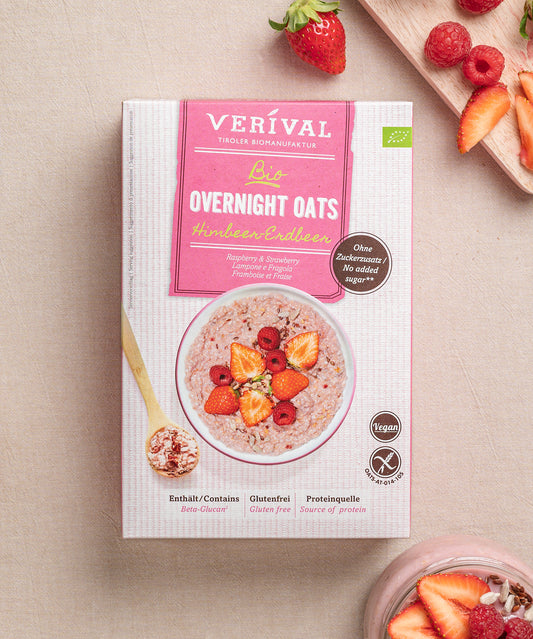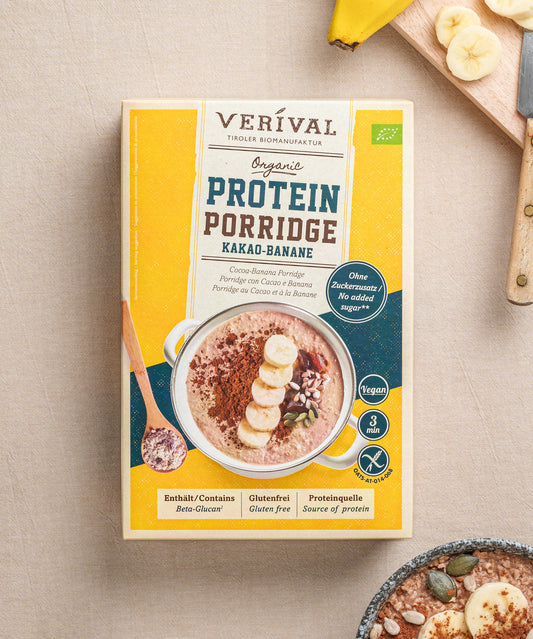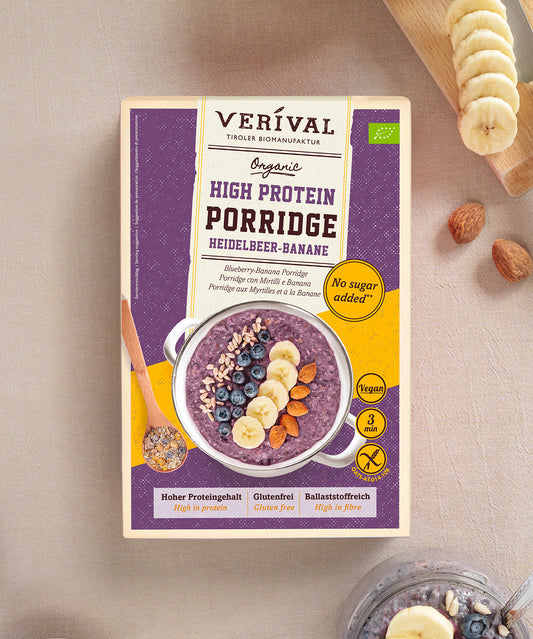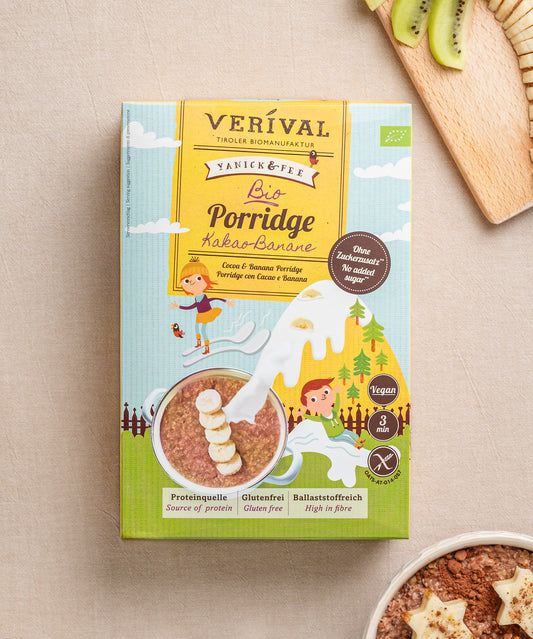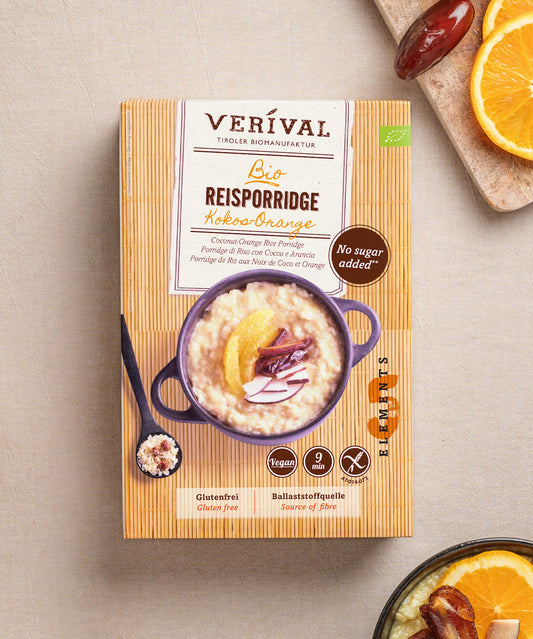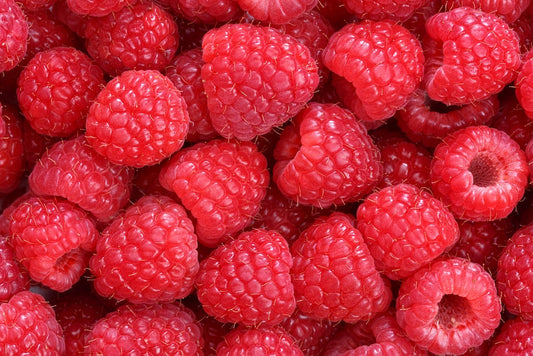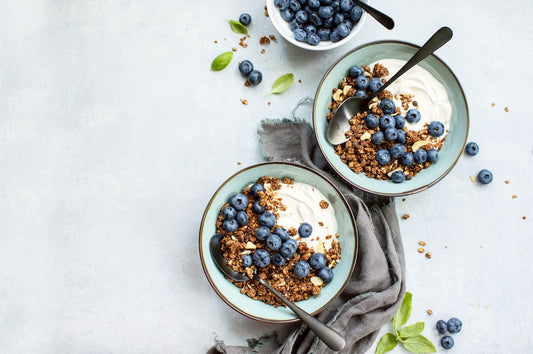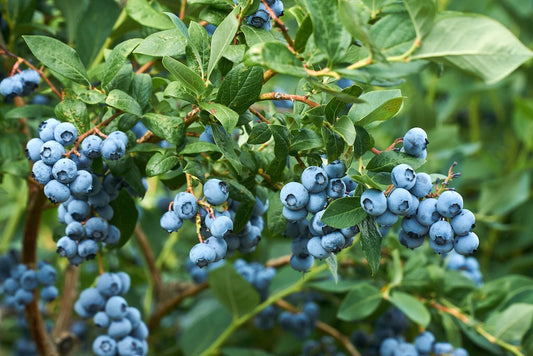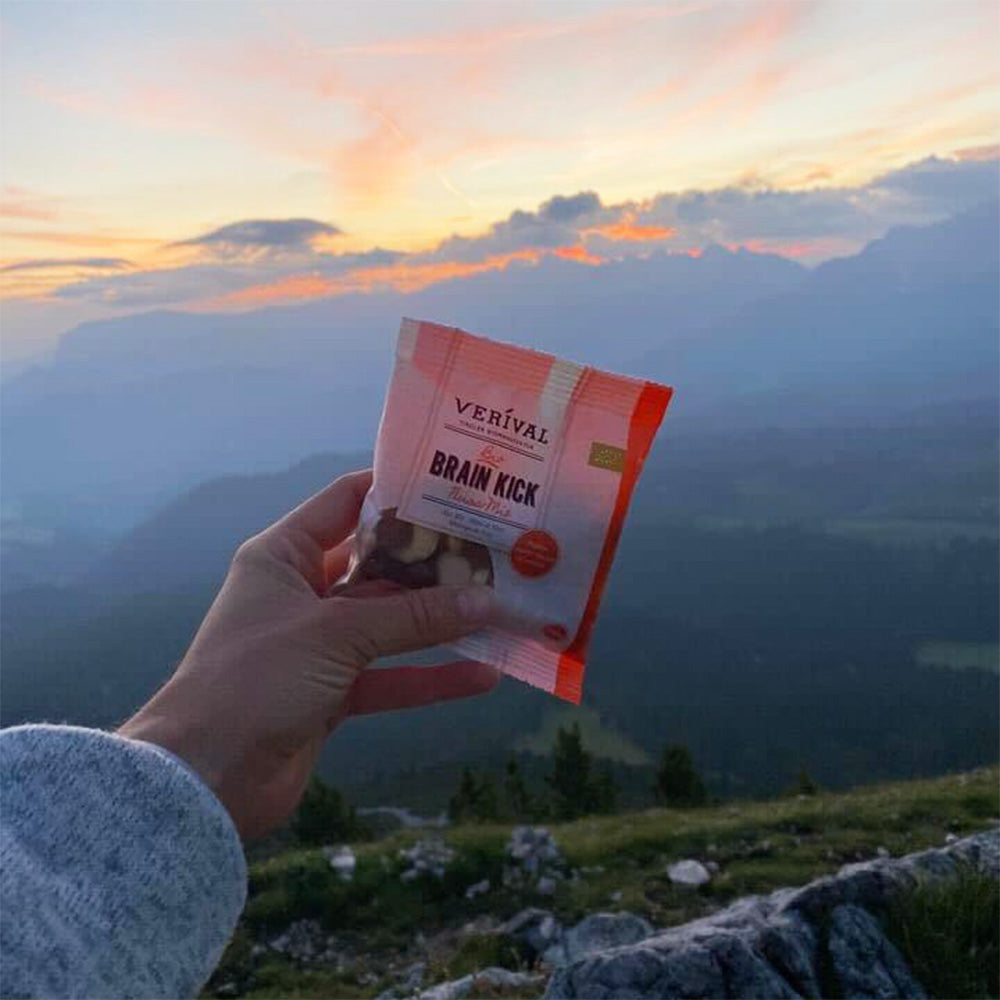Vegetables and dietary fiber are essential for our health and play a vital role in a balanced diet. As indigestible plant components, they contribute significantly to intestinal health, regulate blood sugar levels, reduce the risk of cardiovascular disease and support weight control.
Their role as food for beneficial intestinal bacteria, which should not be underestimated, promotes healthy gut flora and improves digestion. Unfortunately, many people neglect to consume enough high-fiber foods in their diet.
In this post, we will take a closer look at high-fiber vegetables and show how easy it is to incorporate this important food into our daily diet to promote health and increase well-being.
High-fiber verival breakfast discover here
Dietary fiber and gut health
The importance of dietary fiber for healthy bowel function cannot be overstated. Dietary fiber helps to keep the gut running smoothly and plays a crucial role in preventing digestive problems.
Due to their indigestible nature, dietary fibers increase stool volume and improve intestinal motility, which facilitates excretion and prevents constipation. This is particularly important as constipation is not only uncomfortable but can also lead to long-term intestinal problems.
In addition, fiber serves as food for beneficial intestinal bacteria. These bacteria ferment the fiber, producing short-chain fatty acids that further improve gut health. They reduce inflammation in the gut, strengthen the intestinal barrier and promote healthy intestinal flora.
A high-fiber diet can also reduce the risk of colon cancer because it promotes regular bowel movements and helps to transport harmful substances out of the body more quickly.
Overall, a sufficient intake of fiber is essential to promote bowel health, prevent digestive problems and support a healthy intestinal flora.
Dietary fiber and nutrition
Dietary fiber plays an important role in a balanced diet and is essential for our health. They help to ensure that our diet is wholesome and rich in nutrients.
A high-fiber diet has many advantages. For one thing, fiber helps us feel fuller for longer, which helps us eat less and maintain a healthy weight. This means that a high-fiber diet can also help you lose weight.
Furthermore, dietary fiber plays an important role in regulating blood sugar levels. Due to its ability to slow down the absorption of carbohydrates, it prevents sudden spikes and drops in blood sugar, which is particularly beneficial for diabetics.
A high-fiber diet also helps lower cholesterol levels and reduces the risk of cardiovascular disease. The soluble fibers bind cholesterol in the intestines and thus prevent its absorption into the blood.
To reap the many benefits of fiber in your diet, it is important to include enough fiber-rich foods in your meal plan. Fruits, vegetables, whole grains and legumes are excellent sources of fiber and should be on your plate regularly. A balanced diet rich in fiber supports gut health and well-being and should therefore be part of every diet.
Vegetables and fiber: an overview
Vegetables are an excellent source of fiber and play an important role in a high-fiber diet. There are a variety of vegetables that provide us with valuable fiber while also offering numerous other nutrients and antioxidants.
Among the vegetables rich in fiber, some stand out. Legumes such as beans, peas and lentils are particularly high in fiber and are an ideal addition to many dishes. They also contain plant-based protein and various vitamins and minerals.
Dark green leafy vegetables such as spinach, kale and chard are also high in fiber. These vegetables are also rich in iron, calcium and vitamin C, which are essential for our health.
In addition, root vegetables such as parsnips, beetroot and carrots provide a considerable amount of fiber. They are not only delicious, but also versatile in their preparation.
By regularly eating fiber-rich vegetables, we can improve our gut health, stabilize blood sugar levels and reduce the risk of cardiovascular disease. The variety of fiber-rich vegetables allows us to make our diet diverse and nutritious, thus contributing to an overall healthier lifestyle.
Discover protein-rich breakfasts for athletes here
High-fiber root vegetables
Root vegetables are not only tasty, but they are also an excellent source of dietary fiber, which contributes to a healthy diet. Some root vegetables are particularly high in fiber and offer a variety of health benefits.
Parsnips are an outstanding high-fiber root vegetable. They contain both soluble and insoluble fiber, which supports gut health and promotes good digestion. Parsnips are also high in vitamins C and K, which strengthen the immune system and support bone health.
Beetroot is another high-fiber root vegetable that offers many health benefits. In addition to fiber, beetroot also contains numerous antioxidants that can reduce inflammation and improve overall health.
Carrots are a popular choice of high-fiber vegetable and are well known for their high beta-carotene content, a precursor to vitamin A. Alongside their many health benefits, the fiber in carrots helps to regulate blood sugar levels and promote a feeling of satiety.
Incorporating high-fiber root vegetables into our diet is easy. They can be used in soups, stews, grilled or as a side dish. By regularly adding high-fiber root vegetables to our meals, we can help improve our gut health and overall nutrition.
Fill up on fiber with vegetables
Leafy vegetables with high fiber content
To help you avoid getting lost in the vegetable jungle, here are the top 10 vegetables with the highest fiber content:
Artichokes: Artichokes contain an impressive 10.3 g of fiber per 100 g. They are versatile and make a delicious addition to many dishes.
Broccoli: Broccoli is an excellent choice with 2.6 g of fiber per 100 g. It also contains many other important nutrients such as vitamins C and K.
Brussels sprouts: Brussels sprouts provide about 3.8 g of fiber per 100 g and are also rich in vitamins C and K.
Kale: Kale contains 2.0 g of fiber per 100 g and is a real nutrient powerhouse with lots of vitamins A, C and K.
Beetroot: Beetroot also contains 2.0 g of fiber per 100 g and is also rich in antioxidants and minerals.
Carrots: Carrots have a fiber content of 2.8 g per 100 g and are a tasty snack for in between meals.
Parsnips: Parsnips offer 4.9 g of fiber per 100 g and are characterized by a sweet taste.
Spinach: Spinach contains 2.2 g of fiber per 100 g and is an excellent source of iron and vitamin C.
Swiss chard: Swiss chard provides 1.6 g of fiber per 100 g and is a versatile leafy vegetable with a mild flavor.
Sweet potatoes: Sweet potatoes contain about 3.0 g of fiber per 100 g and are rich in vitamins A and C.
Here are some recipe ideas for you to get enough fiber at breakfast.
Preparation tips for high-fiber vegetables
Preparing high-fiber vegetables properly can ensure maximum health benefits. Here are some handy tips on how to prepare high-fiber vegetables:
You can steam your vegetables instead of boiling them to minimize the loss of nutrients and preserve the fiber content. Some vegetables, such as carrots, cucumbers, and peppers, can also be eaten raw to benefit from the fiber in its natural form. Also, avoid peeling vegetables and fruits, as a lot of fiber is found in the skin. Wash them thoroughly and enjoy them with the peel.
Furthermore, you can experiment with different preparation methods such as roasting, grilling or blanching to take advantage of the versatility of fiber-rich vegetables. You can also add fiber-rich vegetables as a side dish to your meals or use them as the main ingredient in salads, soups or stir-fries. With the right preparation, you can enjoy the full health benefits of fiber-rich vegetables and enrich your diet in a tasty way.
Tips for incorporating fiber-rich vegetables into your daily diet
Incorporating more fiber-rich vegetables into your daily diet is easier than you think. Here are some practical tips to help you successfully include high-fiber vegetables in your meals:
Variety: Choose a variety of fiber-rich vegetables to add variety to your diet and benefit from a range of nutrients.
Snacks: Choose fiber-rich vegetables such as carrot sticks, bell pepper strips or celery sticks as a healthy snack option. Or do you like bananas? Are bananas healthy – they are high in fiber and have other positive effects on our health.
Salads: Prepare colorful salads with spinach, kale, tomatoes and other vegetables to ensure a rich fiber intake.
Smoothies: Blend high-fiber vegetables like spinach or chard into smoothies to get your morning dose of fiber.
Side dishes: Use high-fiber vegetables as a side dish for main courses such as grilled vegetables with fish or chicken.
With these simple tips, you can easily incorporate high-fiber vegetables into your daily diet and benefit from the numerous health advantages they have to offer.
Discover the complete Verival breakfast range here
Conclusion: the importance of high-fiber vegetables
Fibre-rich vegetables play a crucial role in a healthy diet and have many positive effects on our health. A high intake of fibre supports gut health, regulates blood sugar levels, promotes satiety and lowers the risk of cardiovascular disease.
The variety of fibre-rich vegetables allows us to make our diet diverse and nutrient-rich. Artichokes, broccoli, beetroot, kale and many more add valuable nutrients and fiber to our meals.
Incorporating fiber-rich vegetables into our daily diet is easy. By steaming, raw consumption, salads, smoothies and other preparation methods, we can enjoy the full health benefits of these foods.
So, be sure to include high-fiber vegetables in your meals and experience the positive effects on your health. A balanced diet with plenty of high-fiber vegetables is the key to a healthy lifestyle and a radiant glow.
Frequently asked questions
Which foods have the most fiber?
Most dietary fiber is found in plant-based foods such as vegetables, fruit, legumes, whole grains and nuts.
Which fruit has the most fiber?
Some fruits with a high fiber content are pears, apples, berries (raspberries, blackberries) and avocados.
Are there a lot of fibers in tomatoes?
No, tomatoes are comparatively low in fiber. They contain about 1.2 g of fiber per 100 g.
How do you get 30 g of fiber a day?
To get 30 g of fiber a day, you should include enough high-fiber foods such as vegetables, fruits, whole grains, and legumes in your daily diet.
Why is fiber important for a healthy diet?
Dietary fiber is important for a healthy diet because it promotes gut health, regulates blood sugar levels, reduces cardiovascular risk, provides satiety and aids nutrient absorption. Vegetables, fruits, whole grains and legumes are good sources of dietary fiber and should be included in the diet to promote good health and minimize disease risk.
Which vegetables are particularly high in fiber?
Some vegetables high in fiber include artichokes, Brussels sprouts, parsnips, kale, broccoli, beetroot, carrots, spinach, chard and sweet potatoes. These versatile vegetables can play an important role in a balanced and healthy diet.
What is intestinal flora?
The intestinal flora refers to the totality of microorganisms, especially bacteria, that live in the human gut. A healthy intestinal flora is important for digestion, the absorption of nutrients and the immune system. Fiber serves as food for beneficial intestinal bacteria and thus promotes a healthy intestinal flora.


